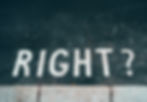Regina vs. Hicklin||Case Summary|| 1868 LR 3 QB 360 UK||Obscenity Test and Freedom of Expression
- Vinita Pathak
- Apr 15
- 2 min read
Updated: May 8

FACTS
The case of Regina vs. Hicklin arose from the seizure of an anti-Catholic pamphlet titled The Confessional Unmasked under the Obscene Publications Act 1857 in England. The pamphlet contained descriptions of the confessional practices of Catholic priests, which authorities deemed obscene. Benjamin Hicklin, a London magistrate, ordered the seizure, and the case reached the Queen's Bench for judicial review.
The issue before the court was whether the pamphlet was legally obscene and whether its seizure under the law was justified.
ISSUES
What constitutes obscenity under English law?
Should a publication be judged as a whole, or can parts of it be considered obscene in isolation?
Does the intent of the publication (moral or educational purpose) affect its classification as obscene?
RELEVANT LEGAL PROVISIONS
Obscene Publications Act 1857: Allowed the seizure and destruction of obscene materials to prevent their circulation.
Common Law Principles on Free Speech: While England did not have a codified constitutional right to free speech, common law recognized certain freedoms subject to reasonable restrictions.
JUDGEMENT
Chief Justice Sir Alexander Cockburn, delivering the judgment, established the Hicklin Test to determine obscenity. The test stated:
"The test of obscenity is whether the tendency of the matter charged as obscene is to deprave and corrupt those whose minds are open to such immoral influences and into whose hands a publication of this sort may fall."
KEY OBSERVATIONS FROM THE JUDGEMENT
A publication need not be obscene in its entirety; even isolated passages could render it obscene.
The effect on susceptible audiences (particularly the young or morally weak) was the key factor in determining obscenity.
The intent of the author or publisher was irrelevant; even if the material had educational or moralistic purposes, it could still be deemed obscene if it had a tendency to corrupt.
The court upheld the seizure of the pamphlet under the Obscene Publications Act 1857, ruling it as obscene.
IMPACT OF THE JUDGEMENT
The Hicklin Test became the dominant legal standard for defining obscenity in the UK and influenced laws in countries such as India, Canada, and the United States.
The test was later criticized for being too broad and subjective, leading to censorship of works that had literary, scientific, or political value.
In the United States, the Hicklin Test was eventually replaced by the Miller Test in Miller v. California (1973), which introduced a more contextual approach.
In India, Ranjit Udeshi v. State of Maharashtra (1965) reaffirmed the Hicklin Test but was later reconsidered in Aveek Sarkar v. State of West Bengal (2014), which moved towards a contemporary approach.
CONCLUSION
The Regina v. Hicklin case set a precedent for obscenity laws by prioritizing the potential moral corruption of readers over artistic or intellectual merit. While it shaped global obscenity jurisprudence for decades, it was later criticized and gradually abandoned in favor of more balanced tests that consider the literary, artistic, and public interest value of the material.
Vinita Pathak


